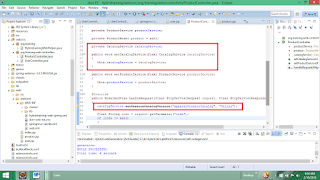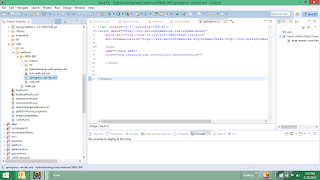In Hybris yaccelerator is a default out-of-box
store but we want to create our own by using Hybris multi-channel suite.Required to follow below steps for the same
Step1:-
Go to cmd and hybris bin plateform directory and type >ant modulegen
Step2:- Choose extension
template accelerator
Step 3:- Enter store name .Here given store name "azmat"
Step 4:- Enter package name.Here given package name "com.azmat"
After performing all above step , Below seven
extension gets
(1) azmatcockpits
(2) azmatcore
(3) azmatfacades
(4) azmatfulfilmentprocess
(5) azmatinitialdata
(6) azmatstorefront
(7) azmattest
Step 5:- Add all newly created extension to C:\dv\hybris\config/localextensions.xml
Step 6:- Do all the below step
(a) Run ant clean all
(b) Start the Hybris Server
(c) Initialize extension from Hybris management console
Some analysis from code perspective:-
Here are example:-
Example 1:-
When
we hit the URL http://localhost:9001/azmatstorefront/?site=apparel-uk
, above given page gets displayed(Refer # home page). If we want to
figure out which controller gets called
When we hit this URL.
Step A:- Refer blow entry in azmatstorefront\web\webroot\WEB-INF\config\spring-mvc-config.xml
<util:map
id="defaultPreviewUrlResolverPageMappings">
<entry key="homepage" value="/"/>
<entry key="cartPage" value="/cart"/>
<entry key="search" value="/search"/>
<entry key="searchEmpty" value="/search"/>
<entry key="account" value="/my-account"/>
</util:map>
Step B:- Search
text (@RequestMapping("/"))for the home page , By this
way we can get controller name. In this case coming HomePageController.java
From the controller, we can get information
about page view .
Example 2:-
On click of button “ADD
TO BAG”, URL /azmatstorefront/en/cart/add gets
called . For the same search for
the text (“/cart/add”). In this case controller name is coming AddToCartController.java


































